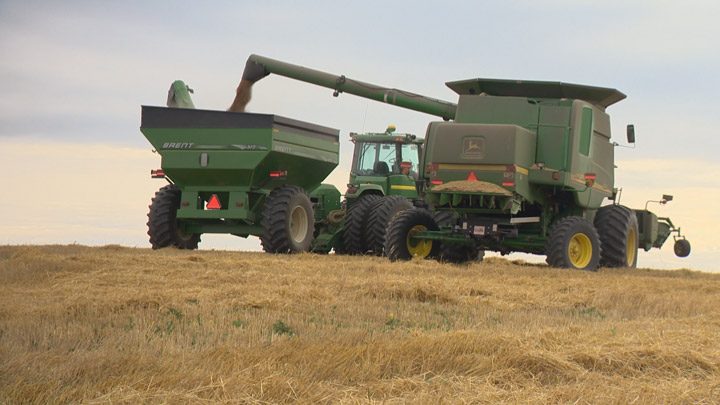With cold temperatures looming in Saskatchewan, harvest is virtually complete across the province.

Throughout September and October, most of the province had dry weather allowing producers to harvest without any major weather delays according to this week’s Crop Report.
“Harvest started early for many producers in the southwest and west-central regions after another dry growing season,” the Crop Report read.
“Late seeding dates and weekly precipitation during the flowering and seed filling stages delayed harvest in the eastern and northern parts of the province until the latter half of August, but resulted in higher yield potential.”
Producers saw varying yields across the province, depending mostly on the amount of moisture received throughout the season.
Yields in the southwest and west-central regions are again below average, with some producers reporting slightly improved yields compared to last year. Yields in the eastern and northern regions were much improved and many producers are reporting yields higher than average.
Average yields are being estimated as 44 bushels per acre for hard red spring wheat, 31 bushels per acre for durum, 93 bushels per acre for oats, 64 bushels per acre for barley, 36 bushels per acre for canola, 34 bushels per acre for peas and 1,165 pounds per acre for lentils.
Now that harvest is complete in all regions of the province, producers are looking for steady precipitation before the ground freezes and winter arrives.
- ‘Shock and disbelief’ after Manitoba school trustee’s Indigenous comments
- Invasive strep: ‘Don’t wait’ to seek care, N.S. woman warns on long road to recovery
- Norad looking to NATO to help detect threats over the Arctic, chief says
- ‘Super lice’ are becoming more resistant to chemical shampoos. What to use instead
Moisture conditions are a concern for many producers, especially those who have struggled through the season with infrequent and minimal rainfalls. The province said even the regions that started the year with a surplus of moisture are now becoming very dry and producers are hoping for rain soon.
“Significant precipitation will be needed this fall and over winter to replenish moisture levels in the soil and dugouts,” the Crop Report said.
Heading into winter, topsoil moisture on cropland is rated as 22 per cent adequate, 35 per cent short and 43 per cent very short. Hay and pasture land topsoil moisture is rated as 16 per cent adequate, 37 per cent short and 47 per cent very short.
The lack of moisture has also affected winter seeding.
Many soils in the province are too dry for proper germination of winter cereals and producers have decided not to risk seeding winter wheat and fall rye. Across the province seeded acres of winter wheat fell an estimated 23 per cent while fall rye acres fell 17 per cent. Producers who did seed winter cereals have reported that crops did not germinate well or at all.





Comments